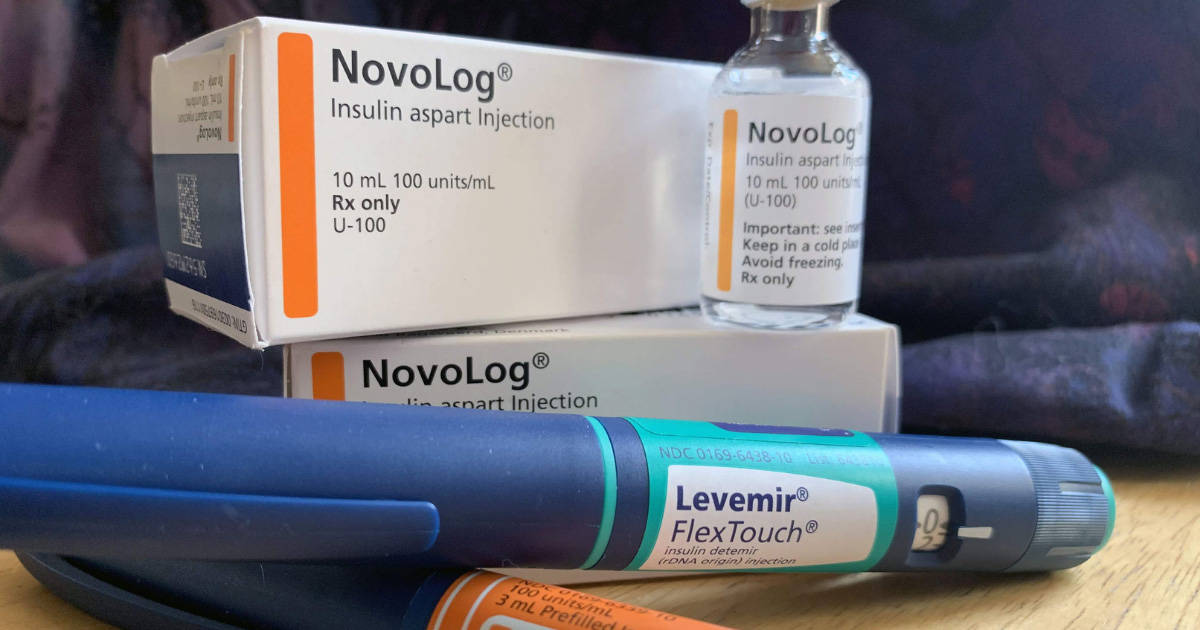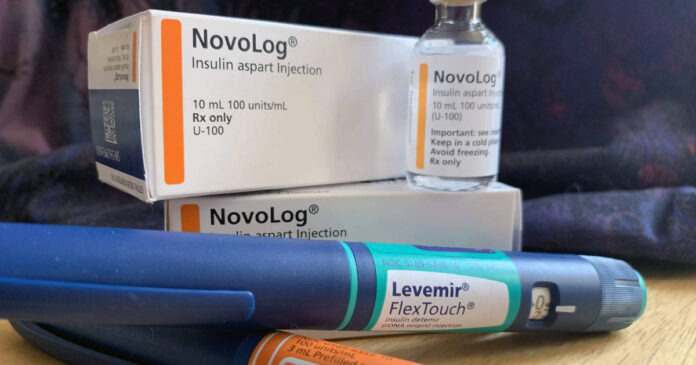What do you do when you go to your native pharmacy to fill your month-to-month insulin or different diabetes treatment prescription, solely to search out that your well being insurer has switched your treatment with out your physician (otherwise you!) figuring out?
This follow is named ‘non-medical switching’ and occurs when a well being insurer removes a coated prescription out of your well being plan or strikes it to a better tier in your plan, making your co-payment prohibitively costly. Plans will normally do that to economize.
The results of non-medical switching can differ from a slight annoyance to extraordinarily destructive medical penalties.
On this put up, I’ll clarify why insurance coverage firms typically swap your diabetes treatment and the choices you’ve got for interesting the choice.
How do medical health insurance firms resolve which medication to cowl?
Based on Categorical Scripts, medical health insurance firms first have a look at the efficacy of a drug, not essentially the price of a drug, when deciding what to cowl.
Well being plans normally have committees made up of physicians and pharmacists who evaluation the data that federal regulators used to approve a drug, along with what number of different, related medication are in the marketplace, earlier than making a closing resolution.
All well being plans in the US cowl insulin, it simply is determined by what type they’re keen to cowl.
What’s non-medical switching?
Non-medical switching is a standard cost-saving tactic utilized by many medical health insurance plans in the US.
It occurs when an insurance coverage firm adjustments the phrases of a contract or the price of a medicine for a secure affected person; the “swap” isn’t on account of medical causes however is usually a less expensive model that the well being insurer has deemed interchangeable with the previous treatment that the affected person was prescribed.
This follow differs from “step remedy” the place a affected person should “fail” on a drug first earlier than the well being plan will cowl a dearer one.
Assume: forcing a affected person with diabetes to make use of an older, human insulin (like R or NPH), and to finally have a excessive A1c, earlier than the well being plan will cowl a more recent, sooner, analog insulin, like Humalog or Novolog.
Based on the U.S. Ache Basis, non-medical switching prices the US over $100 billion yearly, and it instantly hurts sufferers who’re in any other case secure on their prescription drugs.
Is non-medical switching at all times an issue?
It’s vital to notice that non-medical switching is just not at all times a foul factor.
First, the follow is just not quite common, so when you’re newly recognized, don’t fear about this till it really turns into an issue.
Second, when you’re taking a medicine, however your well being plan switches you to a more recent model of the identical drug that works even higher, or a drug that works fully interchangeably together with your previous treatment and also you discover no distinction, then there’s no downside and there’s no motive to fret.
Non-medical switching is a matter in case your well being plan adjustments your treatment to a different treatment that you simply’re unable to take as a result of your well being will endure when you do.
Learn how to undo non-medical switching
Having your treatment modified on the final minute, particularly when you’re doing properly on it, might be extraordinarily irritating. The excellent news is that you simply don’t have to just accept these adjustments outright.
There are a number of issues you are able to do to enchantment a choice to change your diabetes treatment. Here’s a step-by-step information:
Name your physician
The enchantment course of can take time, so instantly notifying your diabetes staff of the adjustments you’ve skilled on the pharmacy counter is crucial. Your physician can supply recommendation on how you can change your dosing quantities, if relevant.
If you happen to’re unwilling or unable to make use of the newly prescribed treatment, however your previous treatment is now exceedingly costly, the American Diabetes Affiliation and Past Kind 1 have gathered a wealth of sources for sufferers who need assistance affording their drugs.
Request your previous treatment
If you happen to’ve been on a particular sort of insulin or treatment for a number of years or extra (on the identical medical health insurance plan), insurers usually received’t change your protection, but it surely does occur.
If you happen to’re unwilling to attempt the brand new drug, you need to instantly name your medical health insurance plan and request your previous treatment.
The well being plan could say that they want a previous authorization (PAR) out of your physician stating that the precise prescription drug they’re requesting is a medical necessity to you and can’t be used interchangeably with one other, cheaper drug.
A previous authorization request should be submitted by your medical skilled – you can’t submit one by yourself behalf.
Some individuals run into these points a number of instances a yr, for a number of drugs, because the PAR course of is a method for insurers to chop prices (and keep away from overlaying dearer medication for his or her shoppers).
Have your physician request “99 months” on the prior authorization, so this headache doesn’t turn out to be an annual occasion.
In a 2018 examine within the Journal of Present Medical Analysis and Opinion, researchers surveyed 451 individuals with sort 2 diabetes about their experiences with non-medical switching.
After their drugs have been switched, one in 5 had been advised by their physician that their blood glucose ranges have been considerably or a lot worse than they’d been on their earlier treatment.
About 20% additionally needed to examine their blood sugars extra usually than earlier than they switched, which may turn out to be a bodily, emotional, and monetary burden.
Moreover, practically 1 in 4 stated the non-medical swap negatively impacted their psychological well being.
Request a “peer-to-peer” evaluation
In case your well being plan denies your request in your previous treatment again, you may request a peer-to-peer analysis, through which your physician confers with a physician from the well being plan to debate why your particular treatment is medically needed.
This could typically clear up the issue with out going by a prolonged appeals course of.
File an enchantment (an inner evaluation)
If you happen to’re scuffling with the brand new treatment and you can’t afford your previous treatment (by paying the upper co-payments or paying out of pocket), your physician can enchantment your insurance coverage firm’s resolution by requesting an inner evaluation.
Remember that it is a prolonged course of, and there’s no assure of success. Listed here are the steps in submitting an insurance coverage enchantment:
- Collect the denial letter from the earlier makes an attempt to get your previous treatment again. That is typically known as a dedication letter.
- Overview your Clarification of Advantages doc to verify the denial wasn’t made in error. You’ll be able to at all times name your insurer’s customer support line to get extra details about the unique denial.
- Name your physician’s workplace to allow them to know you’re requesting an enchantment. They might help you write an enchantment letter in your behalf and even allow you to fill out the proper varieties.
- Preserve monitor of your blood glucose knowledge for a number of weeks. Sure, we’re bringing out the old-school logbook (or a diabetes app). This can be utilized as proof in your enchantment that the brand new drug is inflicting destructive penalties in your diabetes management.
Chris Plourde, who lives with sort 1 diabetes and has skilled non-medical switching, says, “paperwork to substantiate your declare that the brand new treatment isn’t match is vital. If you happen to can present documentation that the unique drug labored, normally insurance coverage firms might be okay with it,” she says.
“However you want quite a lot of documentation proving that you simply want it. If you happen to get switched, write down your blood glucose readings, write down how the brand new treatment makes you are feeling, write down all of the adjustments you discover.”
File an exterior evaluation
Generally inner evaluations don’t work out for the affected person, and the insurance coverage firm sticks with its authentic resolution. Don’t fear; you may request extra inner evaluations, and even request an exterior evaluation.
Conducting an exterior evaluation implies that you’ll usher in an unbiased third occasion who will resolve the matter. Your well being plan’s closing denial letter will embody info on how you can file for an exterior evaluation and the timeframe inside which you need to achieve this (normally 60 days from the ultimate denial).
After a 3rd occasion has decided in an exterior evaluation, the medical health insurance plan is legally certain to just accept it.
What are individuals doing about this?
Fortunately, many affected person advocacy organizations are keen on fixing this downside to stop it from occurring to extra individuals.
Moreover, many states are beginning to ban non-medical switching or restrict the follow.
In the previous few years, California and Nevada have adopted such legal guidelines. States like Florida and Tennessee have additionally thought of related laws, and Massachusetts has fashioned a fee to research the concept. Colorado has banned the follow for some medication.
Nonetheless you select to get entangled, your well being and diabetes administration ought to by no means be compromised for a well being plan’s backside greenback.


